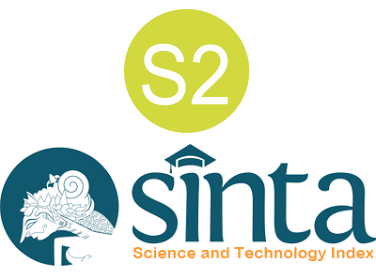Segara Kerthi Concept as A Source for Developing Educational Games in Pererenan Village
DOI:
https://doi.org/10.37329/jpah.v9i4.4270Keywords:
Segara Kerthi, Game Development, Educational Games, InteractiveAbstract
The development of educational games has become an increasingly important focus in efforts to improve access and quality of education in various regions, including in rural areas such as Pererenan Village. In this context, the Segara Kerthi concept, which describes the management of the marine environment to maintain sustainability, serves as a valuable source of inspiration. This study aims to explore how the Segara Kerthi concept can be utilized as a foundation for developing an educational game that promotes environmental awareness and supports local values, as well as to analyze the role of the game as a medium of communication. The method used in this research is research and development (R&D) with a media function theory approach. Data were collected through observation, interviews, evaluation, and literature studies. The research resulted in the development of a game titled Segara Watch, which provides an interactive and enjoyable learning experience to introduce knowledge and skills related to marine environmental management and sustainable cleanliness. This game is aligned with the Pererenan Gumi Lestari village motto and supports the vision and mission of the Governor of Bali, I Wayan Koster, Nangun Sat Kerthi Loka Bali.
References
Adwitya Sanjaya, P. K., M. Rudi Irwansyah, & I Putu Arya Dharmayasa. (2023). Pengembangan Tanah Lot Sebagai Wisata Spiritual: Suatu Kreasi Model Pembangunan Berkelanjutan. Edunomics Journal, 4(1), 87–94.
Dinar, I. G. A. A. G. P., Sugiartha, I. N. G., & Mulyawati, K. R. (2022). Strategi Pemulihan Keberlanjutan dan Ketangguhan Pariwisata Menghadapi Krisis. Kertha Wicaksana, 16(2), 158–163.
Erlyana, Y., Everlin, S., & Yuwono, I. F. (2023). Analisis Color Palette Berdasarkan Rasa Warna sebagai Penguat Daya Tarik Emosional dalam Video Anak. ANDHARUPA: Jurnal Desain Komunikasi Visual & Multimedia, 9(03), 396–411.
Gómez-García, S., & de la Hera Conde-Pumpido, T. (2023). Newsgames: The Use of Digital Games by Mass-Media Outlets to Convey Journalistic Messages. Games and Culture, 18(4), 449–474.
Jamaludin, D. A., Henderi, H., & Bin Ladjamudin, A. B. (2024). Development of Android Application-Based E-Learning Learning Media Using the Borg and Gall Method. JINAV: Journal of Information and Visualization, 5(1), 171–180.
Laksana, M. A. I., Priyadi, Y., & Wibowo, Y. F. A. (2025). Formation of Use Case Scenario Based on Use Case Diagram Using Text Semantics for IdVar4CL Application Development. 2025 10th International Conference on Signal Processing and Communication (ICSC), 415–420.
Nugroho, A. T. (2010). Pemrograman Game dengan Java dan GTGE. Yogyakarta: Andi.
Oberle, E., Zeni, M., Munday, F., & Brussoni, M. (2021). Support Factors and Barriers for Outdoor Learning in Elementary Schools: A Systemic Perspective. American Journal of Health Education, 52(5), 251–265.
Peters, J. H., & Wardana, W. (2013). Tri Hita Karana The Spirit Of Bali (A. Primanda, Ed.; 1st ed., Vol. 1). Jakarta: Gramedia.
Sakti, S. A., Endraswara, S., & Rohman, A. (2024). Revitalizing local wisdom within character education through ethnopedagogy apporach: A case study on a preschool in Yogyakarta. Heliyon, 10(10), e31370.
Saskara, I. P. A. (2019). Pengaruh Augmented Reality Senjata Dewata Nawa Sanga sebagai Media Pembelajaran Interaktif Terhadap Pembelajaran Agama Hindu Di SD Negeri 2 Pererenan. Widya Duta, 14(2).
Saskara, I. P. A. (2024). Tri Hita Karana as The Foundation for Digital Game Development. Gelar: Jurnal Seni Budaya, 22(1), 92–101.
Siregar, N. S. S. (2016). Kajian Tentang Interaksionisme Simbolik. Perspektif, 1(2).
Sudiana, I. K., I Made Sugiarta, & Nia Erlina. (2024). Analysis of Scheme Types in the Focus of the Lecturer’s Research Area Based on Tri Hita Karana Philosophy. JPI (Jurnal Pendidikan Indonesia), 13(3), 471–482.
Swara, N. N. A. A. V., Wulandari, N. L. A. A., & Kawiana, I. G. P. (2022). Nilai Kearifan Lokal Nyepi Segara Sebagai Modal Sosial Pembangunan Berkelanjutan Daerah Pesisir Nusa Penida. Jurnal Penelitian Agama Hindu, 6(4), 213–225.
van de Wetering, J., Leijten, P., Spitzer, J., & Thomaes, S. (2022). Does Environmental Education Benefit Environmental Outcomes In Children And Adolescents? A Meta-Analysis. Journal of Environmental Psychology, 81, 101782.
Wiana, I. K. (2018). “Sad Kertih”: Sastra Agama, Filosofi, dan Aktualisasinya. Jurnal Bali Membangun Bali, 1(3), 169–180.
Wiryawan, K. G. (2006). Tri Hita Karana Ekologi Ajaran Agama Hindu Benih Benih Kebenaran. Surabaya: Paramita.
Wisnu Wardani, D. A. (2019). Nilai Tri Hita Karana Dalam Pasar Jajan Tradisional Naliko Semono Pada Komunitas TIN-THIR Di Kecamatan Jenawi Kabupaten Karanganyar. Widya Aksara: Jurnal Agama Hindu, 21(2).
Downloads
Published
How to Cite
Issue
Section
License
Copyright (c) 2025 I Made Wiradnyana, I Wayan Suwadnyana, I Putu Adi Saskara

This work is licensed under a Creative Commons Attribution-ShareAlike 4.0 International License.
An author who publishes in the Jurnal Penelitian Agama Hindu agrees to the following terms:
- Author retains the copyright and grants the journal the right of first publication of the work simultaneously licensed under the Creative Commons Attribution-ShareAlike 4.0 License that allows others to share the work with an acknowledgement of the work's authorship and initial publication in this journal
- Author is able to enter into separate, additional contractual arrangements for the non-exclusive distribution of the journal's published version of the work (e.g., post it to an institutional repository or publish it in a book) with the acknowledgement of its initial publication in this journal.
- Author is permitted and encouraged to post his/her work online (e.g., in institutional repositories or on their website) prior to and during the submission process, as it can lead to productive exchanges, as well as earlier and greater citation of the published work (See The Effect of Open Access).
Read more about the Creative Commons Attribution-ShareAlike 4.0 Licence here: https://creativecommons.org/licenses/by-sa/4.0/.








